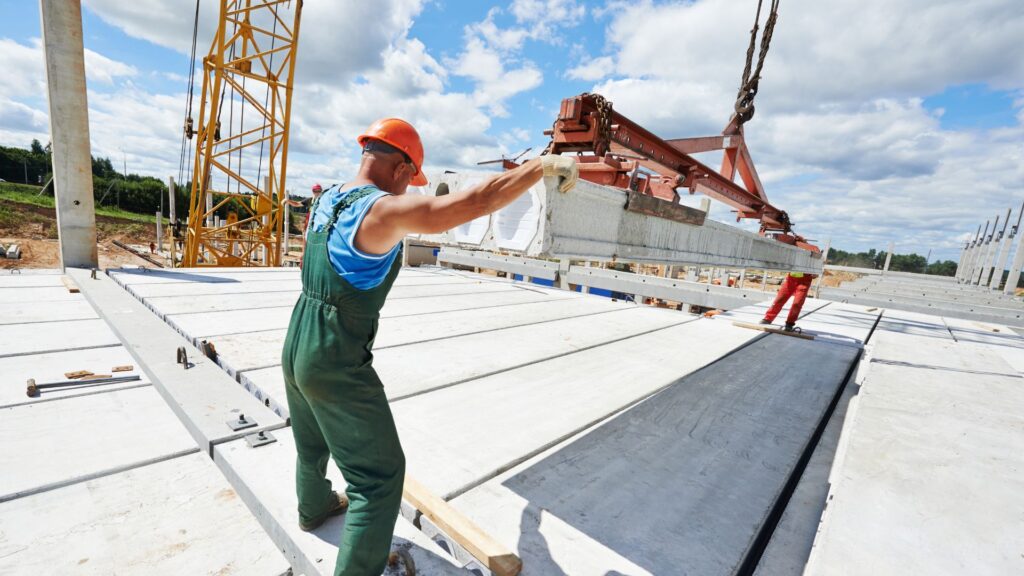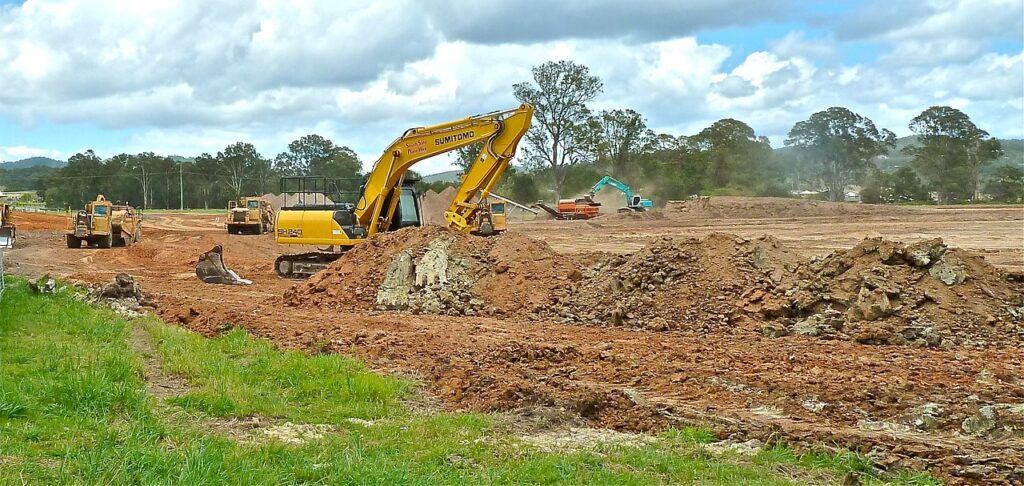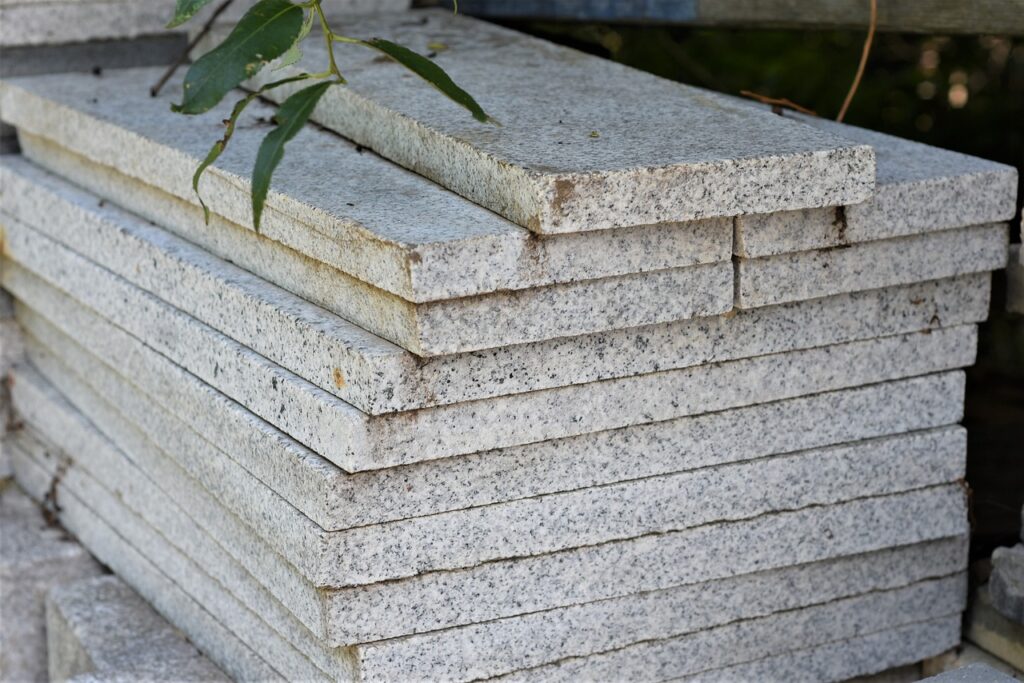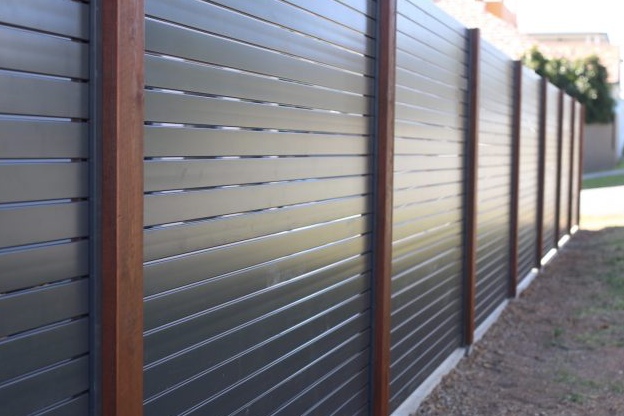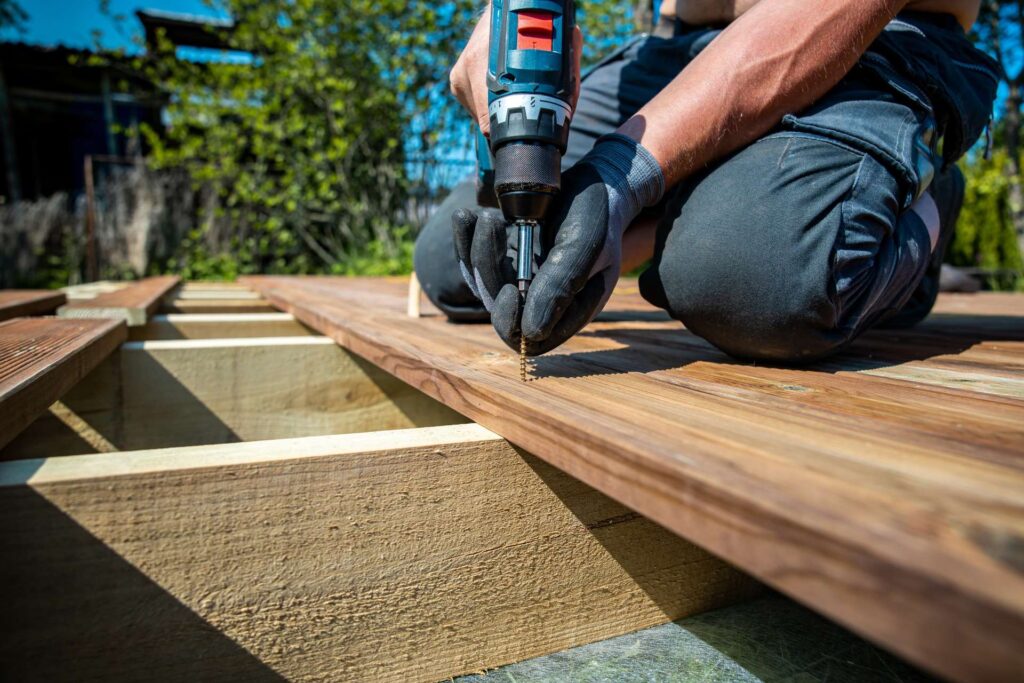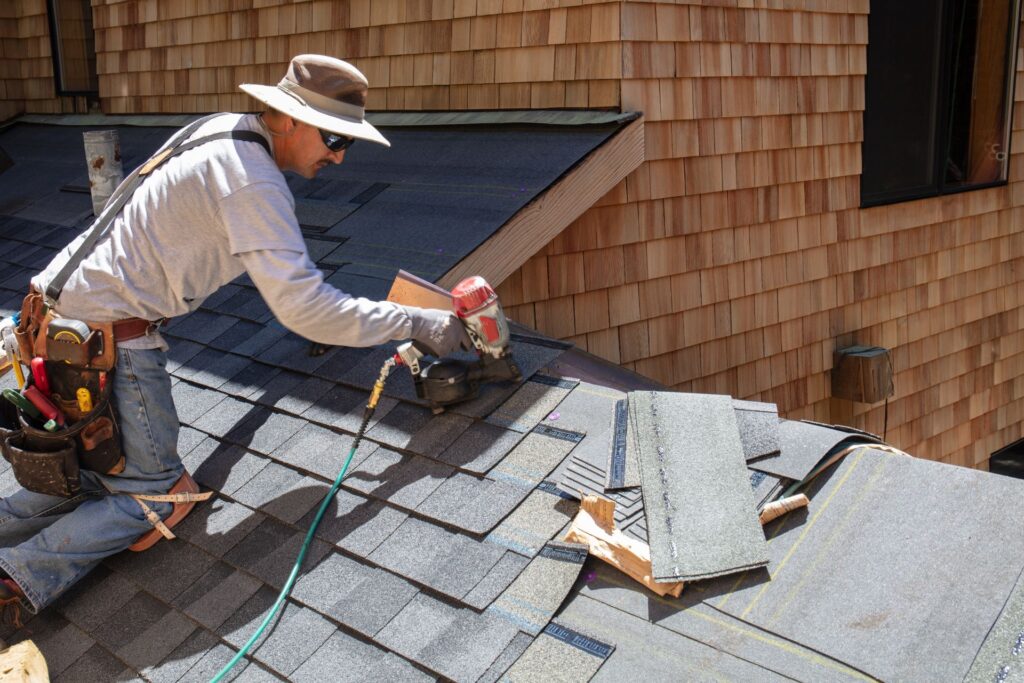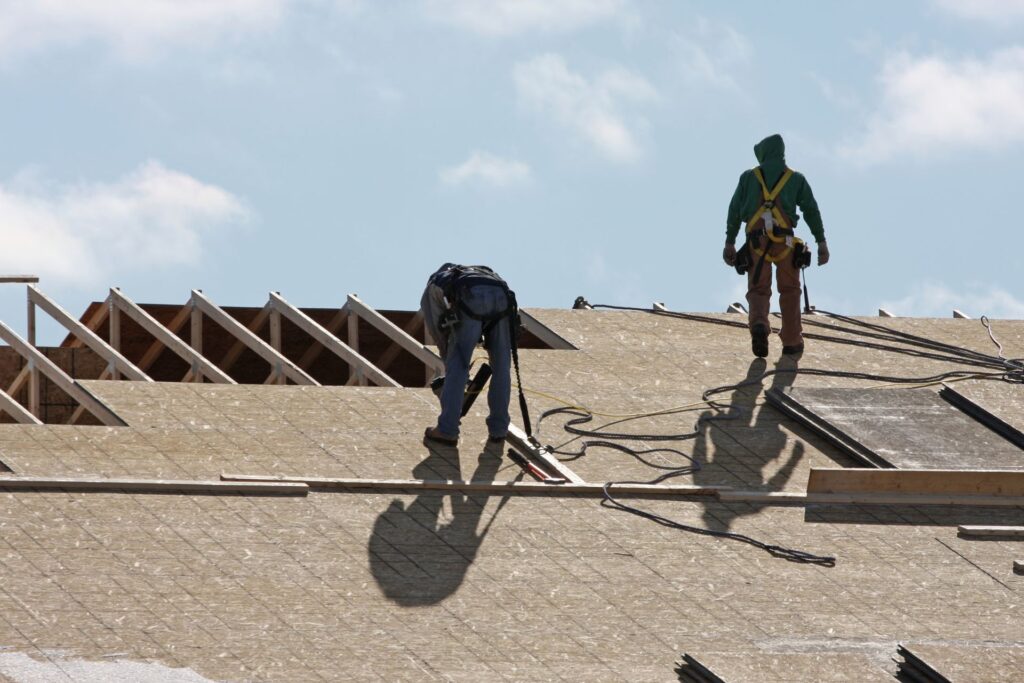Builders Risk Insurance Cost Calculator
Total Estimated Cost: NZD $0.00

Welcome to your go-to guide for understanding and simplifying builders risk insurance costs! Whether you’re a homeowner, contractor, or small business owner embarking on a construction project, figuring out the insurance coverage you need can often feel overwhelming. That’s where a builders risk insurance cost calculator comes in handy—an easy-to-use tool that helps you estimate your insurance expenses accurately, ensuring your project is protected from unexpected events like fire, theft, or weather damage. In this post, we’ll dive into how these calculators work, what factors influence the cost, and how you can make the most informed decision for your project’s financial security.
On average, the cost of builders risk insurance ranges from 1% to 5% of the total construction project value. This percentage varies based on factors such as the project location, type of materials used, policy duration, and coverage limits. Using a builders risk insurance cost calculator can help you quickly estimate your specific premium based on these variables, ensuring accurate budgeting for your construction project.
- Builders Risk Insurance Cost Calculator
- Definition and Purpose
- What Does It Cover?
- Real-World Example
- Location of the Project
- Project Value
- Construction Type and Materials
- Policy Duration
- Policy Limits and Deductibles
- Additional Coverage Options
- Example Breakdown
- Definition of the Builders Risk Insurance Cost Calculator
- Why Use a Builders Risk Insurance Cost Calculator?
- Features of a Good Builders Risk Insurance Cost Calculator
- Types of Builders Risk Insurance Calculators Available
- Where to Find a Builders Risk Insurance Cost Calculator
- Step 1: Gather Your Project Information
- Step 2: Input the Data
- Step 3: Customize Additional Coverages
- Step 4: Generate and Review the Estimate
- Step 5: Compare Estimates or Contact Providers
- 1. Optimize Your Policy Coverage
- 2. Increase Deductibles
- 3. Improve Site Security
- 4. Shop Around for Policies
- 5. Bundle with Other Insurance Policies
- Final Thoughts
- Myth 1: Builders Risk Insurance Is Too Expensive for Small Projects
- Myth 2: Only Large Developers Need Builders Risk Insurance
- Myth 3: You Don’t Need It if You Have General Liability Insurance
- Myth 4: The Cheapest Policy Is Always Best
- Final Thoughts
What Is Builders Risk Insurance?
Builders risk insurance is a specialized form of property insurance designed to protect construction projects during their most vulnerable phase—while they’re being built or renovated. Unlike traditional insurance policies, which cover completed structures, builders risk insurance offers temporary coverage for physical loss or damage to a project while it’s under construction. This coverage is essential for safeguarding both new builds and significant renovations, ensuring that unexpected events don’t derail the project or cause financial hardship.
Definition and Purpose
Builders risk insurance, also known as “course of construction insurance,” provides temporary coverage specifically for buildings or structures while they are being built or undergoing renovations. It’s designed to protect the insured from various physical losses that may occur during the construction process. The primary purpose of this insurance is to cover the costs associated with unexpected damages, ranging from natural disasters to human error.
The coverage is temporary, usually beginning at the start of the project and ending once the work is completed or the property is ready for use. This type of insurance is indispensable in protecting a construction project’s financial investment against potential setbacks caused by damage or destruction of the property during the building phase.
What Does It Cover?
Builders risk insurance offers protection against a wide variety of potential threats that could halt or delay a construction project. Some of the most common types of coverage include:
- Fire: Construction sites are particularly vulnerable to fire hazards due to the presence of flammable materials, equipment, and incomplete fire prevention systems.
- Vandalism: Unfortunately, unfinished structures are easy targets for vandals. Builders risk insurance covers the cost of repairs or replacement if vandals damage the property.
- Weather Damage: Harsh weather conditions such as storms, floods, hail, or strong winds can wreak havoc on a construction project. Builders risk insurance helps mitigate the financial damage caused by such natural events.
- Theft: Construction sites are often filled with valuable tools, equipment, and materials, making them attractive to thieves. Builders risk insurance covers losses caused by theft, ensuring the project can continue with minimal interruption.
- Falling Objects: Objects or debris falling on a partially built structure can cause significant damage. This coverage includes such incidents, which may otherwise require costly repairs.
- Explosion: Due to the nature of construction materials, there is a heightened risk of explosions. Builders risk insurance ensures coverage for such potentially devastating events.

Who Needs It?
Builders risk insurance is vital for anyone involved in the construction process, from individual homeowners to large construction firms. Some of the key parties who typically purchase this insurance include:
- Homeowners: For homeowners involved in custom home builds or major renovations, builders risk insurance is critical. It protects their investment in the construction process, ensuring that any damages don’t leave them out of pocket.
- Contractors: Contractors, who are responsible for carrying out the construction work, need builders risk insurance to protect themselves from financial losses related to damaged materials, theft, or project delays caused by physical damage.
- Real Estate Developers: Developers, particularly those working on large-scale projects, rely on builders risk insurance to cover the potential for loss, protecting their significant financial investments from unforeseen setbacks.
This type of insurance is not just a nice-to-have; in many cases, it is required by lenders or contractual obligations. Without it, one disaster could cause a project to fall apart, leaving the involved parties in financial disarray.
Real-World Example
Imagine a construction company is in the middle of building a multi-million-dollar commercial building. Midway through the project, a severe storm hits, causing extensive wind and water damage to the partially completed structure. Without builders risk insurance, the company would be responsible for the total cost of repairing the damage, which could lead to significant financial losses or even project abandonment.
However, with builders risk insurance in place, the company can file a claim to cover the cost of repairs. This allows the project to continue with minimal financial disruption, ensuring that timelines are met and costs remain within budget. In this scenario, the insurance saved the construction company from a potentially catastrophic financial blow, demonstrating the critical role builders risk insurance plays in protecting construction projects from unforeseen events.
In conclusion, builders risk insurance is an essential coverage option for anyone involved in construction, providing protection against physical damage or loss that can occur during the building process. Whether it’s fire, theft, vandalism, or severe weather, this temporary insurance coverage is designed to keep construction projects moving forward, regardless of what challenges arise.

Factors That Impact Builders Risk Insurance Cost
When it comes to calculating builders risk insurance costs, several key factors are considered by insurance companies. Understanding these factors can help project owners and contractors anticipate potential costs and make informed decisions. Here’s a detailed breakdown of the elements that influence builders risk insurance premiums:
Location of the Project
The geographic location of a construction project is one of the most significant variables that affects the cost of builders risk insurance. Projects in high-risk areas, such as coastal regions prone to hurricanes or zones susceptible to earthquakes, tend to have higher premiums. This is because the risk of natural disasters in these areas increases the likelihood of damages. For example, a construction site near the Gulf of Mexico may face higher insurance costs due to the increased chance of hurricanes, flooding, or strong winds. On the other hand, projects in regions with a lower risk of natural disasters typically see more affordable insurance rates. Insurers assess the location carefully to determine the level of exposure to potential hazards, and this directly impacts the cost.
Project Value
The overall value of the construction project is another crucial factor that impacts builders risk insurance premiums. The project value includes not only the cost of materials and labor but also the potential future income the completed project could generate. For instance, a high-rise commercial building worth millions of dollars will likely have a higher insurance premium compared to a small residential project. The more expensive the project, the higher the financial risk for the insurer. As a result, projects with greater overall value often require higher premiums to ensure adequate coverage. Insurers calculate the total value of the project to ensure that the coverage reflects the potential financial exposure in case of damage or loss.
Construction Type and Materials
The type of construction and the materials used play a significant role in determining the insurance cost. Wood-frame buildings, for example, are more susceptible to fire and water damage compared to structures made of steel or concrete. As a result, projects involving wood-frame construction generally come with higher premiums. Conversely, buildings made from more fire-resistant and durable materials, such as steel or concrete, typically incur lower insurance costs. This is because these materials are less likely to sustain damage, reducing the insurer’s risk. Different material choices can also influence costs based on their ability to withstand certain risks, such as wind, hail, or earthquakes.
Policy Duration
The length of time the insurance policy needs to be active also affects the overall cost. Builders risk insurance is typically taken out for the duration of the construction project. A longer project duration means the insurer is exposed to potential risks for an extended period, which may increase the premium. For instance, a project expected to take 12 months will have higher insurance costs than a similar project scheduled for six months, as the longer time frame increases the chances of damage or delays. Contractors and project owners should carefully consider the projected timeline to ensure they’re not paying for more coverage than necessary while still protecting their investment during the entire construction phase.
Policy Limits and Deductibles
The relationship between policy limits, deductibles, and premiums is a key factor in determining builders risk insurance costs. A higher policy limit, which provides more extensive coverage, will lead to a higher premium. However, choosing a higher deductible—meaning the policyholder will pay more out-of-pocket in the event of a claim—can lower the premium. It’s essential to strike a balance between the coverage limit and deductible that fits both the project’s budget and its risk exposure. For example, a construction project with a $10 million value will need higher coverage than a $1 million project, but the policyholder may reduce costs by opting for a higher deductible if they are comfortable with assuming more risk.
Additional Coverage Options
Builders risk insurance policies often come with the option to add extra coverage for specific risks, known as endorsements. These additional coverage options can increase the overall cost of the policy. For example, coverage for soft costs—such as architectural fees, legal costs, or interest on construction loans—can be added to the policy to protect against financial losses due to project delays. Other add-ons might include coverage for materials in transit, which insures construction materials while they are being transported to the site, or coverage for delays caused by weather or supply chain issues. Each of these add-ons enhances the policy but comes with an additional cost, so it’s important to evaluate whether these options are necessary based on the project’s scope and potential risks.
Example Breakdown
Let’s take a hypothetical example to illustrate how these factors can impact builders risk insurance costs. Imagine a $5 million residential apartment project in a coastal area. The project will take 18 months to complete and use wood-frame construction. Here’s how the factors would influence the insurance cost:
- Location: Coastal areas are high-risk, so premiums will be higher due to potential damage from hurricanes or flooding.
- Project Value: A $5 million project means the insurer must cover a large financial risk, leading to a higher premium.
- Construction Type and Materials: Since wood-frame construction is more vulnerable to fire and water damage, the premium will be higher than if the building were made of steel or concrete.
- Policy Duration: With an 18-month construction timeline, the insurer is exposed to risks for a longer period, increasing the cost.
- Policy Limits and Deductibles: If the project requires a higher policy limit to cover its value, and the deductible is set low, the premium will be more expensive.
- Additional Coverage Options: If the project owner opts to add coverage for soft costs and delays due to weather, these add-ons will further raise the price.
In this example, the cumulative effect of these factors would result in a higher overall insurance premium compared to a shorter, less valuable, steel-constructed project in a low-risk area.
In summary, builders risk insurance costs are influenced by multiple factors, including the project’s location, value, construction materials, policy duration, and coverage options. Understanding these elements allows project owners and contractors to make informed decisions about the level of protection they need while managing costs effectively.

What Is A Builders Risk Insurance Cost Calculator?
When planning construction projects, having the right insurance coverage is essential to protect against unexpected losses. Builders Risk Insurance is a policy designed to cover buildings under construction, and estimating the cost of this coverage is crucial for proper financial planning. That’s where a Builders Risk Insurance Cost Calculator comes in. Let’s dive into what it is, how it works, and why you should consider using one.
Definition of the Builders Risk Insurance Cost Calculator
A Builders Risk Insurance cost calculator is a specialized online tool designed to help users estimate the cost of insurance for construction projects. Whether you’re building a residential home or a large commercial structure, this calculator uses a range of data inputs—like the location of the project, the size, and the estimated duration—to provide an accurate quote for your insurance premium. The calculator typically factors in different variables such as the type of construction, materials used, project timeline, and other specific conditions that could influence insurance rates.
By entering this information into the calculator, it will generate a detailed cost estimate tailored to your project, making it easier to budget for builders risk insurance from the get-go.
Why Use a Builders Risk Insurance Cost Calculator?
The primary reason to use a builders risk insurance cost calculator is to streamline the process of obtaining insurance estimates. Without this tool, you’d likely need to contact multiple insurers, fill out extensive forms, and wait for a response, which can be time-consuming and cumbersome. Here’s why using a calculator is the better option:
- Simplicity: These calculators are user-friendly and don’t require a deep understanding of insurance terms or policies. Most calculators offer a step-by-step guide to walk users through the process.
- Accuracy: Using a calculator reduces the risk of human error that can occur when manually estimating insurance costs. With the correct inputs, these calculators can deliver precise and reliable quotes.
- Time-Saving: Instead of waiting days for an insurance agent to provide a quote, you can have an estimate within minutes. This rapid feedback allows you to make quick decisions and move forward with your project without unnecessary delays.
- Avoiding Under- or Over-Estimating: Getting the right coverage is crucial in protecting your assets. Underestimating the cost could leave you underinsured in case of a loss, while overestimating may lead to paying higher premiums than necessary. A calculator helps you find the balance by providing an accurate estimate based on your project details.
Features of a Good Builders Risk Insurance Cost Calculator
Not all calculators are built the same. A good Builders Risk Insurance cost calculator should have several key features that ensure a smooth and accurate experience. Here are some must-have features to look for:
- Easy-to-Use Interface: The calculator should be intuitive, requiring minimal effort to input data and understand the results. A simple, clean design helps users navigate the process quickly, even if they have little prior knowledge of insurance.
- Customizable Inputs: The tool should allow users to input specific details about their construction project, such as location, total project cost, project type (residential, commercial), and other variables that may affect insurance premiums.
- Immediate Results: A reliable calculator will provide results instantly after the necessary details are entered. This eliminates the waiting period associated with manual quotes and allows for on-the-spot decision-making.
- Transparent Calculation Process: A quality calculator will outline how the estimate is derived, allowing you to understand which factors have the most impact on the final premium.
Types of Builders Risk Insurance Calculators Available
Several platforms offer Builders Risk Insurance cost calculators, and they are generally available on websites for insurance companies or third-party tools. Some common places where you can find these calculators include:
- Insurance Company Websites: Most major insurance providers, such as Liberty Mutual, Travelers, and Nationwide, have cost calculators on their websites. These tools are often free to use and provide quotes based on their specific underwriting guidelines.
- Third-Party Comparison Tools: There are also independent platforms that compare quotes from multiple insurers. These sites usually offer a single calculator that pulls in data from several insurance providers, giving you a broader range of cost estimates.
- Specialized Construction Insurance Brokers: Some insurance brokers specialize in construction and builders risk insurance and may offer calculators tailored to the nuances of your particular project. These can be more advanced and may include additional variables that general calculators might overlook.
Where to Find a Builders Risk Insurance Cost Calculator
You can easily access builders risk insurance cost calculators through several well-known platforms:
- Liberty Mutual: Liberty Mutual’s website offers a straightforward calculator designed to provide fast and reliable estimates for builders risk insurance.
- Nationwide: Known for its extensive insurance offerings, Nationwide provides a detailed calculator tailored to construction insurance needs.
- Progressive Commercial: For business owners, Progressive Commercial’s website features a calculator to estimate builders risk coverage, ideal for commercial projects.
Using a builders risk insurance cost calculator can save you time, help you avoid costly mistakes, and ensure your project is adequately covered from start to finish. With these tools readily available online, you can get a better handle on your construction insurance needs and stay within your budget.

Step-By-Step Guide: How To Use A Builders Risk Insurance Cost Calculator
When embarking on a construction project, calculating your builders risk insurance cost is a critical step to ensure your investment is adequately protected. A builders risk insurance cost calculator makes this process simple by providing a clear estimate based on your project’s specifics. Follow this comprehensive guide to ensure you’re using the tool effectively and accurately.
Step 1: Gather Your Project Information
Before diving into the calculator, it’s essential to have all your project details ready. The more precise the information you provide, the more accurate your insurance estimate will be. Here’s what you’ll need:
- Project Value: This includes the total estimated cost of the project, covering materials, labor, and potential contingencies. Be thorough with your valuation to avoid under or overestimating.
- Location: The geographical location of the project can significantly influence your insurance cost. Factors like local building codes, climate risks (e.g., flooding or earthquakes), and construction costs vary by region.
- Construction Duration: This refers to the estimated timeline for completing the project. Insurers need to know how long the building will be under construction, as longer durations may pose higher risks.
- Additional Coverage Needs: Depending on your project, you might require extra coverages, such as protection against equipment theft, vandalism, or natural disasters. Identifying these needs upfront helps refine your estimate.
Having all these details at hand will streamline the process and ensure the calculator generates an accurate result.
Step 2: Input the Data
Once you’ve gathered your project information, it’s time to input it into the builders risk insurance cost calculator. Most calculators will have intuitive fields to guide you through the process. Here’s what you can expect to enter:
- Location: The exact address or region of your construction site.
- Project Value: The estimated total cost of your project.
- Materials: Some calculators ask for details about the type of materials being used (e.g., wood, steel, etc.), as certain materials may have different risk factors.
- Timeline: The estimated duration of the project.
As you enter this data, the calculator will use these variables to estimate your builders risk insurance premium. Ensure all information is accurate and up-to-date to get the most reliable results.
Step 3: Customize Additional Coverages
After entering the basic data, you’ll likely have the option to customize your coverage. Builders risk insurance can be tailored to fit the specific needs of your project, and this is where you can fine-tune your policy.
- Optional Coverages: Depending on your project, you may want to include additional protections like equipment coverage, protection against theft, or coverage for soft costs (such as legal fees or interest payments if the project gets delayed).
- Exclusions: Be mindful of what the policy doesn’t cover. Some risks, like flood damage or earthquakes, may need to be added if they’re relevant to your location.
- Adjustable Limits: You might also want to adjust coverage limits for certain aspects of the project, such as increasing the protection for expensive materials or reducing coverage for areas you deem less risky.
Take the time to review and customize these additional options based on the unique needs of your construction project.
Step 4: Generate and Review the Estimate
Once all data and coverage options are entered, the calculator will generate your insurance estimate. Here’s what to focus on when reviewing the result:
- Cost Breakdown: Most calculators will provide a detailed breakdown of costs, showing where your money is going. This can include base premiums, extra coverages, and potential discounts.
- Outliers: Look for any unexpected or unusually high costs in the estimate. This could indicate areas where your project carries additional risks or where you might want to adjust your coverage.
- Policy Recommendations: Some calculators provide suggestions on where you might adjust your coverage. For example, they may suggest adding flood protection based on your location.
Carefully reviewing the estimate ensures you fully understand what’s included and whether the coverage is appropriate for your project.
Step 5: Compare Estimates or Contact Providers
After reviewing the estimate, it’s essential to compare it with other insurance providers. Builders risk insurance rates can vary widely between companies, so getting multiple quotes is always a good idea. Here’s what you can do:
- Compare Rates: Enter the same project details into different calculators or reach out directly to other insurance providers. Comparing quotes ensures you’re getting the best possible rate.
- Consult a Professional: If your project is complex or you’re unsure about certain coverages, consulting with an insurance agent or broker can provide valuable insights. They can help tailor a policy to fit your exact needs and offer advice on reducing costs without sacrificing coverage.
This step can help you make a well-informed decision, ensuring your project is covered at a fair price.
By following these steps, you’ll be able to use a builders risk insurance cost calculator effectively. Not only will this tool provide a clear estimate, but it also helps ensure that your construction project is fully protected against potential risks. Take your time to input accurate information, customize coverages as needed, and compare estimates to get the best deal for your project.

How To Reduce Builders Risk Insurance Costs
Reducing Builders Risk Insurance costs can be achieved through a series of strategic steps that focus on optimizing coverage, managing deductibles, and taking proactive measures to minimize risk. By understanding how to approach these key areas, you can secure the protection you need without breaking the bank. Here’s a closer look at how you can effectively reduce your Builders Risk Insurance premiums:
1. Optimize Your Policy Coverage
One of the most effective ways to lower your Builders Risk Insurance cost is to carefully review your policy coverage. Oftentimes, policies come with add-ons and extra coverage that might not be necessary for your specific project. For example, some policies may include coverage for equipment or materials that are not a significant part of your build. By assessing the actual risks your construction project faces, you can remove unnecessary coverage and streamline your policy. This approach ensures you’re only paying for what you truly need, which can significantly reduce your overall premiums.
Additionally, it’s essential to understand the value of the property you’re insuring. Over-insuring a project based on inflated value estimates can lead to unnecessarily high premiums. Instead, ensure your coverage matches the actual value of the work being performed.
2. Increase Deductibles
Another method to cut costs is by opting for a higher deductible. The deductible is the amount you’re responsible for paying out-of-pocket before your insurance kicks in. Choosing a higher deductible can result in lower monthly or yearly premiums since the insurer assumes less financial risk for smaller claims.
However, there are pros and cons to this approach. While a higher deductible can save you money in the long term, it also means you’ll need to be prepared to cover more upfront costs if a claim is filed. If your construction site is relatively low-risk or you have a good track record, this can be a cost-effective way to reduce premiums. On the other hand, if your project involves a higher level of risk, carefully weigh whether you can manage a larger deductible in the event of an accident or loss.
3. Improve Site Security
Enhancing the security of your construction site can play a crucial role in lowering your Builders Risk Insurance costs. Insurance companies base their premiums on the level of risk they perceive. By taking steps to mitigate those risks, you present a safer environment, and as a result, insurers may lower your premium rates.
Some ways to improve site security include:
- Installing advanced security systems such as cameras, motion detectors, and alarms.
- Using fencing to limit access to the construction site, preventing unauthorized entry.
- Employing fire-resistant materials and installing fire prevention systems such as sprinklers or extinguishers.
These actions demonstrate that you are actively reducing the chance of theft, vandalism, and fire damage. By lowering the likelihood of claims, insurance providers often offer reduced rates for more secure sites.
4. Shop Around for Policies
The insurance market is competitive, and shopping around for policies is one of the simplest ways to ensure you’re getting the best deal. Each insurance provider evaluates risks differently and may offer varying rates for similar coverage. By gathering multiple quotes, you can compare premiums, coverage options, and exclusions side by side.
It’s essential to not only focus on price but also to review the coverage each policy offers. The cheapest policy may not provide adequate protection, so balancing cost and coverage is key. You may also want to seek the advice of an insurance broker who specializes in construction insurance. They can help navigate the different options and find a policy that fits both your coverage needs and budget.
5. Bundle with Other Insurance Policies
Another way to save on Builders Risk Insurance is by bundling it with other types of insurance policies. Many insurers offer discounts when you purchase multiple types of coverage, such as general liability insurance or workers’ compensation, from the same provider. This bundling can result in a lower overall insurance cost, providing a financial incentive to consolidate your policies under one insurer.
However, make sure that the bundled policies still meet all your requirements and that you’re not sacrificing coverage for the sake of cost savings. The key is finding a balance between affordability and comprehensive protection.
Final Thoughts
Reducing the cost of Builders Risk Insurance is possible by taking a thoughtful, proactive approach. Whether it’s optimizing your policy, increasing deductibles, improving site security, shopping around, or bundling your policies, each of these strategies can contribute to significant savings. By understanding your specific coverage needs and working to lower risk, you can manage costs effectively while still protecting your construction project from potential financial setbacks.

Common Myths About Builders Risk Insurance Costs
Builders Risk Insurance is an essential protection for anyone involved in a construction project, whether it’s a small home renovation or a large-scale development. However, several misconceptions exist about the costs and necessity of this insurance, especially for smaller projects or individuals outside the realm of major construction companies. Let’s explore and debunk some common myths surrounding Builders Risk Insurance costs, offering clarity on why it’s essential to have the right coverage for your project.
Myth 1: Builders Risk Insurance Is Too Expensive for Small Projects
Many people believe that Builders Risk Insurance is only affordable for large-scale construction, but this isn’t true. Builders Risk Insurance is highly customizable, and coverage options can be tailored to fit the specific needs of small projects. Whether you’re building an addition to your home or making smaller renovations, you can adjust the coverage limits and policy duration to ensure it fits within your budget. Additionally, many insurers offer short-term policies, which can be ideal for smaller projects, allowing you to protect your investment without overspending. So, even if you’re working on a modest project, there’s a cost-effective option that suits your needs.
Myth 2: Only Large Developers Need Builders Risk Insurance
Another widespread misconception is that Builders Risk Insurance is only for large construction firms or commercial developers. In reality, homeowners, small businesses, and even independent contractors can greatly benefit from this coverage. Builders Risk Insurance protects against unexpected events like fires, storms, theft, or vandalism that could cause significant financial loss. For homeowners building a new house or adding an extension, the financial impact of losing materials or facing delays could be devastating. Small businesses, especially those involved in contracting, can also protect their equipment and materials on-site. Therefore, it’s essential for everyone, not just big developers, to consider this protection.
Myth 3: You Don’t Need It if You Have General Liability Insurance
One of the most dangerous myths is the belief that General Liability Insurance is enough to cover all potential risks during construction. While General Liability Insurance protects against third-party claims for injury or property damage, it does not cover the materials, structure, or property involved in the construction itself. Builders Risk Insurance fills this gap by covering damage to the construction project, including materials, fixtures, and sometimes even equipment on-site. These two types of insurance serve different purposes, and in most cases, both are necessary to fully protect a construction project. Without Builders Risk Insurance, you’re leaving a significant part of your investment unprotected.
Myth 4: The Cheapest Policy Is Always Best
It’s tempting to go for the cheapest option when looking for Builders Risk Insurance, but this could lead to problems down the road. The least expensive policy often comes with less comprehensive coverage, leaving you vulnerable to costly damages or losses. In construction, where unexpected issues can arise at any moment, having inadequate insurance could mean absorbing those costs yourself. Instead of focusing solely on price, it’s crucial to consider the scope of coverage and potential exclusions. Investing in a well-rounded policy that fits your project’s specific needs is often the smarter choice, ensuring you’re fully protected against all possible risks.
Final Thoughts
Builders Risk Insurance is an important safeguard for any construction project, and understanding the truth behind these common myths can help you make informed decisions. Whether your project is large or small, selecting the right coverage can save you money and headaches in the long run. Don’t fall for these misconceptions—take the time to explore your options, and ensure your project is adequately protected from unforeseen circumstances.

FAQs: About Builders Risk Insurance Cost Calculator
Conclusion
Builders risk insurance is a crucial policy for protecting construction projects against potential risks like damage, theft, or natural disasters during the building process. The costs for this insurance can vary depending on factors such as the type of project, location, and coverage limits, which is why using a builders risk insurance cost calculator is an effective way to estimate expenses accurately. A calculator simplifies the process by providing a clear estimate, allowing you to make more informed financial decisions as you plan your project. It’s highly recommended to use one as part of your project planning to avoid unexpected costs and ensure comprehensive protection. Ready to streamline your project budgeting? Try out a builders risk insurance cost calculator today and remove the guesswork from your planning.
Find A Professional Builder Company Near You!
- Auckland Builders For Small Jobs
- Builders Alexandra
- Builders Ashburton
- Builders Auckland
- Builders Blenheim
- Builders Cambridge
- Builders Central Otago
- Builders Christchurch
- Builders Clyde
- Builders Cromwell
- Builders Dunedin
- Builders Feilding
- Builders Gisborne
- Builders Hamilton
- Builders Hastings
- Builders Havelock North
- Builders Hawkes Bay
- Builders Hibiscus Coast
- Builders Invercargill
- Builders Johnsonville
- Builders Kapiti
- Builders Kerikeri
- Builders Levin
- Builders Lower Hutt
- Builders Manawatu
- Builders Masterton
- Builders Mosgiel
- Builders Napier
- Builders Nelson
- Builders New Plymouth
- Builders Oamaru
- Builders Paihia
- Builders Palmerston North
- Builders Paraparaumu
- Builders Porirua
- Builders Pukekohe
- Builders Queenstown
- Builders Rangiora
- Builders Rolleston
- Builders Taupo
- Builders Tauranga
- Builders Te Awamutu
- Builders Timaru
- Builders Tokoroa
- Builders Upper Hutt
- Builders Waikanae
- Builders Wanaka
- Builders Warkworth
- Builders Wellington
- Builders West Auckland
- Builders Whakatane
- Builders Whanganui
- Builders Whangarei
- Handyman Wellington
- Home Builders Rotorua
- Kitchen Removal Service Auckland
- Wellington Builders For Small Jobs
About the Author:
Mike Veail is a recognized digital marketing expert with over 6 years of experience in helping tradespeople and small businesses thrive online. A former quantity surveyor, Mike combines deep industry knowledge with hands-on expertise in SEO and Google Ads. His marketing strategies are tailored to the specific needs of the trades sector, helping businesses increase visibility and generate more leads through proven, ethical methods.
Mike has successfully partnered with numerous companies, establishing a track record of delivering measurable results. His work has been featured across various platforms that showcase his expertise in lead generation and online marketing for the trades sector.
Learn more about Mike's experience and services at https://theleadguy.online or follow him on social media:

